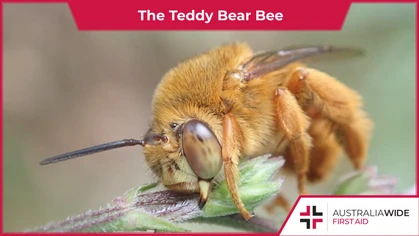6 Most Common Spiders in Queensland

Bites and Stings
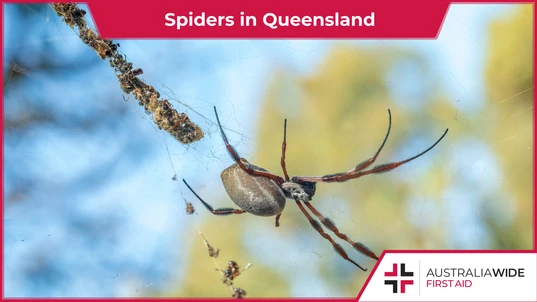
South East Queensland is home to a variety of spider species ranging from the harmless to life-threatening. Continue reading for more information on how to identify and treat bites from some of Queensland's most common spiders.
South east Queensland is teaming with a variety of spider species. In this article, we uncover the appearance, habitat, and danger level of 6 of Queensland's most common spider species. You can also enrol in one of our Queensland first aid courses to learn more about identifying and treating spider bites: We have training locations in every state, capital city, and major town throughout Australia. Head to our website to find and enrol in a first aid course near you today.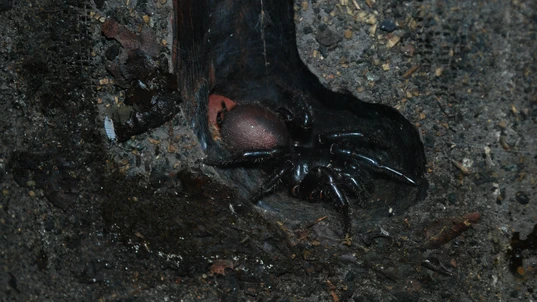
The Funnel web spider
Funnel web spider
Appearance
Though there are at least 40 species of Funnel web spiders, they generally have the following characteristics:- Medium to large sized body ranging from 1 cm to 5 cm
- Their body colour can range from dark brown to black
- The carapace covering the front of their body is shiny and sparsely covered in hair
Habitat
Funnel webs live in burrows in cool, sheltered sites with plenty of moisture. For instance, they can be found in or under:- Rocks
- Crevices
- Rotting logs
- Dense shrubberies
- Borer holes in rough-baked trees
Danger
Though not all Funnel webs are known to be dangerous, any bite from a Funnel web should be treated as a medical emergency. Some Funnel-web venom can turn nerves 'on' and force them to fire repeatedly, which can lead to muscle spasms, low blood pressure, organ failure, coma, and death.First aid
- Reassure the casualty and keep them at rest and under constant observation
- Call Triple Zero (000) for an ambulance
- Follow the basic life support guidelines per DRSABCD
- Apply the Pressure Immobilisation Technique
- Immobilise the limb and joints with a splint until the ambulance arrives - if the bite site is on an arm, use a sling
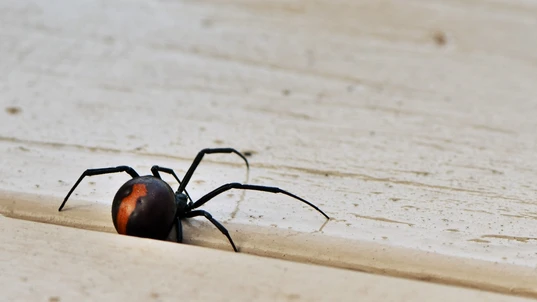
The Redback spider
Redback spider
Appearance
- Redback spiders have slender legs and a pea-shaped body
- Females can reach up to 1 cm in size, while males tend to range from 3 mm to 4 mm - only females can bite humans, as the males' fangs are too small to penetrate skin
- Females are black in colour and have an orange to red stripe on the top of their abdomen - males, on the other hand, are usually light brown with white or yellow markings
- Females have an orange to red hourglass shaped marking on the underside of their abdomen - this marking is also present in males, though it tends to be more pale in colour
Habitat
Redback spiders tend to build their webs in dry, sheltered sites close to human habitation, including:- Sheds
- Toilets
- Rocks and junk piles
Danger
Redback spiders are retiring creatures and rarely leave their webs. As such, most bites occur when a person puts their hand or other body part directly into a web. Signs and symptoms of a Redback spider bite can include:- Intense pain, redness, swelling, and sweating at the bite site
- Nausea, vomiting, and abdominal pain
- Tenderness in the armpit or groin of the affected limb
- Loss of coordination
- Rapid, shallowing breathing
First aid
- Reassure the casualty
- Apply a cold compress to the bite site for periods of up to 20 minutes to lessen the pain
- Observe the casualty for any signs of deterioration
- If the casualty is under 8 years of age, call Triple Zero (000) for an ambulance
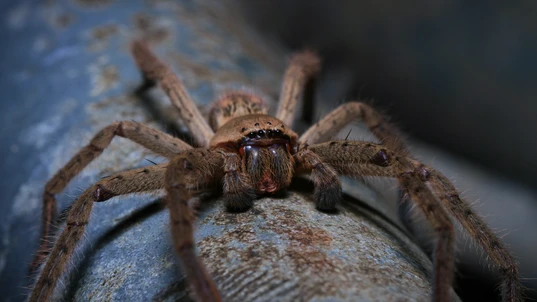
The Huntsman spider
Huntsman spider
Appearance
- Flat, dark coloured body that can range from 1.6 cm to 2 cm - females tend to be larger than males
- Long, hairy legs that can span up to 15 cm and bend forward like those of a crab
Habitat
- Under loose tree bark
- In crevices on rock walls
- Beneath rocks, logs, and other litter
Danger
Huntsman spiders are largely harmless to humans, as their bites are infrequent and generally only cause negligible symptoms like mild pain and swelling. Treat as for a Redback spider bite.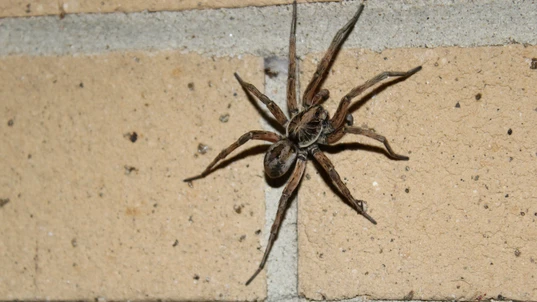
The Wolf spider
Wolf spider
Appearance
- Hairy, drab coloured body covered in grey, brown, or black markings
- Their underside can be light grey, cream, or black and superimposed with black or white markings
Habitat
Wolf spiders commonly take shelter in suburban backyards in leaf litter or burrows, which may or may not have a trapdoor.Danger
Wolf spider are not considered dangerous to humans, as they generally prefer to run away from conflict and their bites typically cause mild symptoms like localised pain or itchiness. Some people, however, may experience more severe symptoms like nausea, dizziness, and a rapid pulse. Treat as for a Redback spider bite.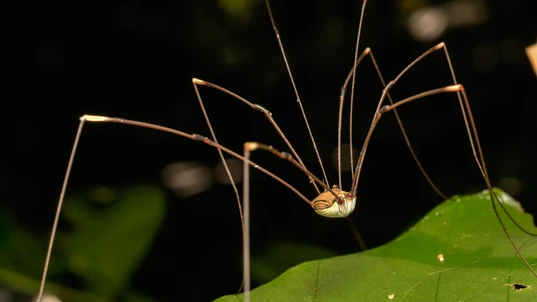
The Daddy-long-legs spider
Daddy-long-legs spider
Appearance
- Small body that that is almost translucent and generally ranges from 2 mm to 10 mm
- Long, skinny legs that can grow up to 50 mm
Habitat
Daddy-long-legs are common throughout urban areas, especially houses. They tend to build their thin, tangled webs in sheltered, relatively undisturbed areas like:- Under furniture
- Behind doors
- In the corners of ceilings
Danger
The Daddy-long-legs spider is considered largely harmless to humans, as its venom generally only causes a short lived burning sensation. Treat as for a Redback spider bite.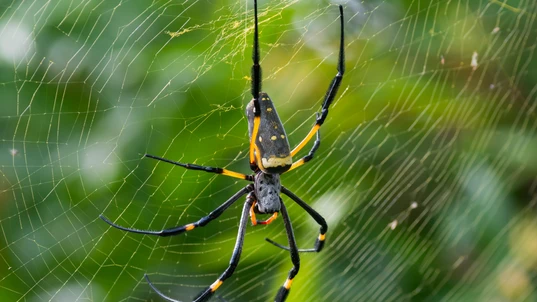
The Golden orb weaver spider
Golden orb spider
Appearance
- Females can range from 2 cm to 5 cm, while males tend to average a modest 5 mm
- Females have a silver-grey to plum coloured body, typically with yellow banded legs - males, meanwhile, are red-brown to brown in colour
Habitat
Golden orb weavers suspend their large, wheel-shaped webs between trees and shrubs in a variety of environments, including mangroves, dry open forest, and coastal sand dune shrubland.Danger
The Golden orb weaver is considered virtually harmless to humans, as their bites are infrequent and generally only cause negligible or mild local pain, swelling, and numbness. Treat as for a Redback spider bite.Final thoughts
You can enrol in one of our Queensland first aid courses to learn more about identifying and treating spider bites: We have training locations in every state, capital city, and major town throughout Australia. Head to our website to find and enrol in a first aid course near you today.Looking to get you First Aid knowledge up to date?
We run certified First Aid courses throughout all major Acustralian citys. Find a location near you.
Originally published at
https://www.australiawidefirstaid.com.au/resources/spiders-in-queensland
as part of the Australia Wide First Aid Articles Library






